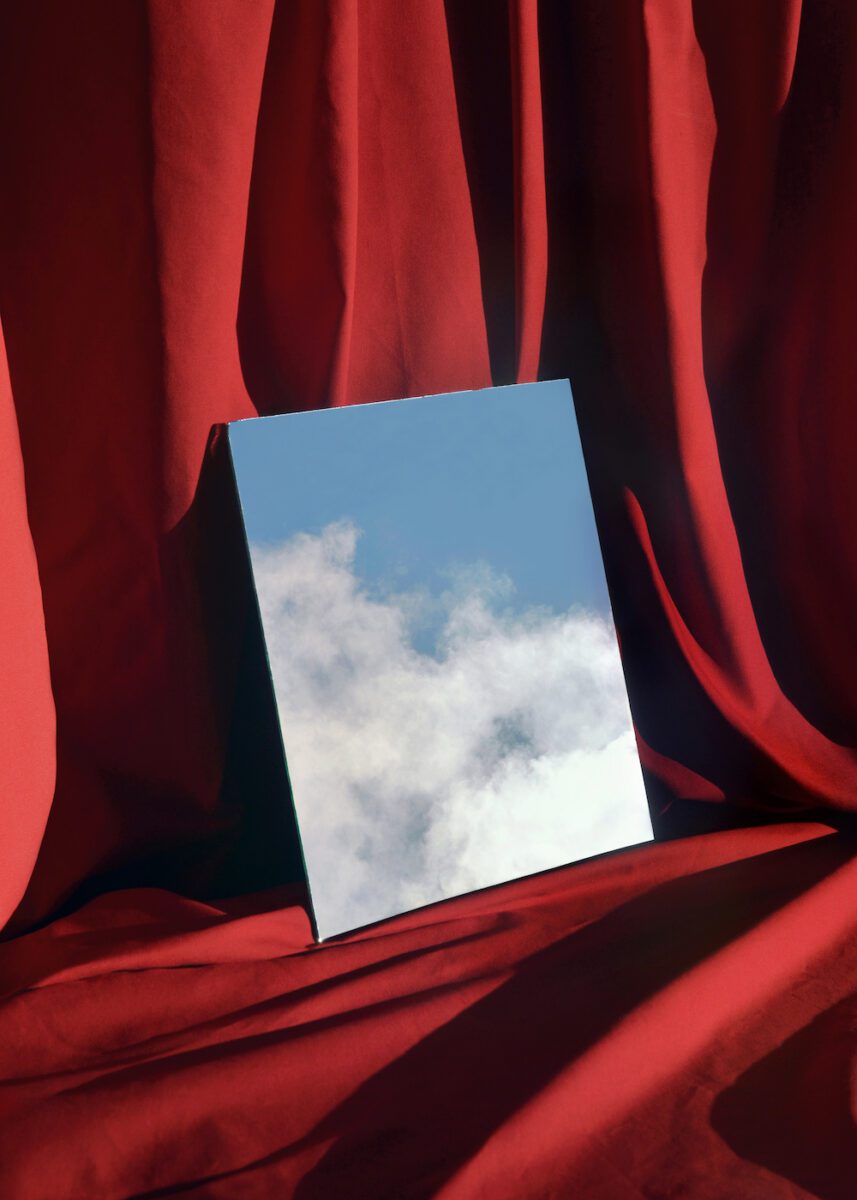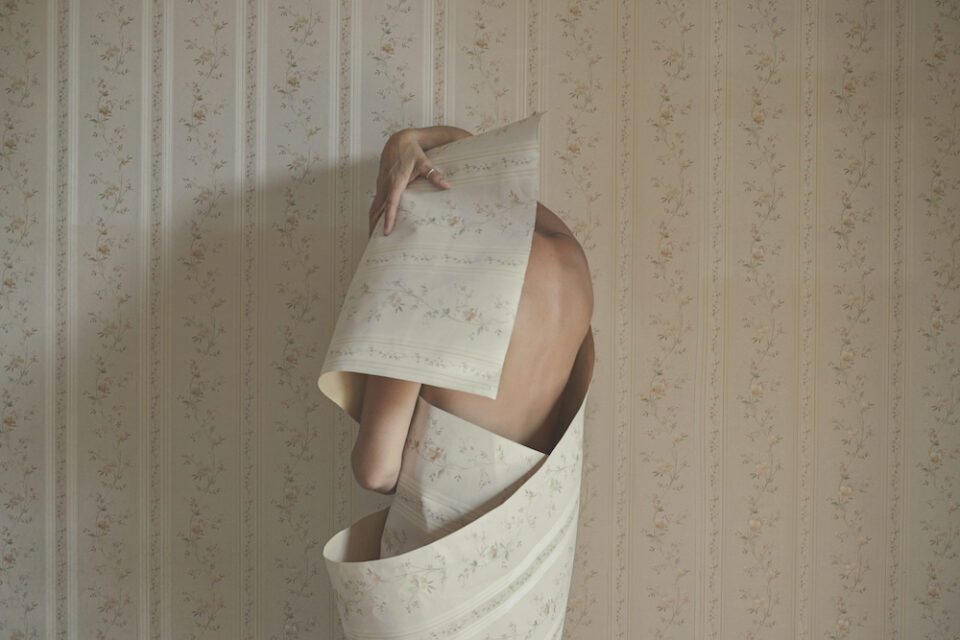“My paintings are visible images which conceal nothing,” said René Magritte (1898-1967). The iconic Belgian painter – now associated with bright green apples and pipes – is responsible for paradoxical works The Treachery of Images (1929), The False Mirror (1929) and The Son of Man (1964). “They evoke mystery… and when one sees one of my pictures, one asks oneself this simple question: ‘What does that mean?’”


Shown here is work by photographer Giorgia Bellotti, who reinterprets Magritte’s thought-provoking imagery for a 21st century audience. In one image, cloud patterned paper cascades across a room. Elsewhere, a figure becomes camouflaged by sheets of floral wallpaper – as if consumed by home decor. In other shots, mirrors lead to bright blue skies, laws of physics are suspended and gravity is defied.

For a long time, painting and drawing were Bellotti’s preferred means of expression. Living in the province of Bologna, Italy, high up in the Tuscan-Emilian Apennines, the artist practiced these disciplines as a child. That was until just a few years ago, when she discovered photography. Bellotti taught herself to shoot by taking a camera into the landscape – responding to nature and capturing the places where she grew up.


Later, Bellotti shifted focus to interior settings, using objects to explore concepts of space and home. She also turned the gaze inward. As such, a psychological undercurrent runs throughout this body of work; obscured faces and surrealist motifs attempt to tap into the unconscious. “My stories always focus on my emotions, my state of mind and search for my own identity,” Bellotti notes.
All images courtesy Giorgia Bellotti.
1. Scompongo e ricompongo
2. Pensiero fluido
3. On fire
4. Confondersi per nascondersi
5. Cubi celesti
6. Scompongo e ricompongo





